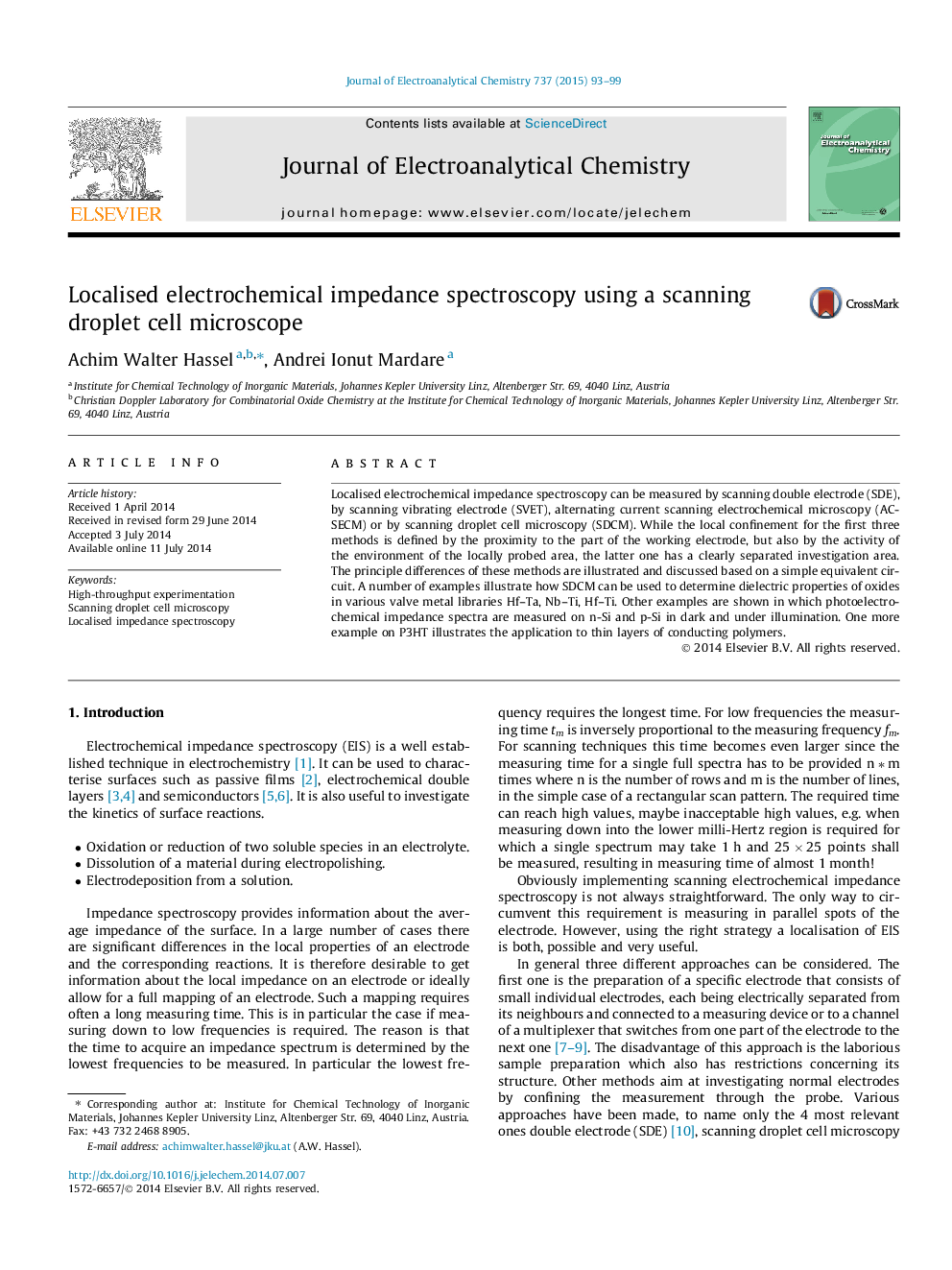| Article ID | Journal | Published Year | Pages | File Type |
|---|---|---|---|---|
| 218516 | Journal of Electroanalytical Chemistry | 2015 | 7 Pages |
•Methods for localised electrochemical impedance spectroscopy (EIS) are compared.•EIS in a scanning droplet cell microscope (SDCM) is discussed based on theoretical considerations.•Examples of localised EIS are given for anodic oxides in Hf–Ta, Hf–Ti and Nb–Ti libraries.•Photoelectrochemical scanning droplet cell microscopy is shown on n-Si and p-Si.•Photoelectrochemical impedance spectroscopy can be performed on nanogram (ng) amounts of polymers P3HT.
Localised electrochemical impedance spectroscopy can be measured by scanning double electrode (SDE), by scanning vibrating electrode (SVET), alternating current scanning electrochemical microscopy (AC-SECM) or by scanning droplet cell microscopy (SDCM). While the local confinement for the first three methods is defined by the proximity to the part of the working electrode, but also by the activity of the environment of the locally probed area, the latter one has a clearly separated investigation area. The principle differences of these methods are illustrated and discussed based on a simple equivalent circuit. A number of examples illustrate how SDCM can be used to determine dielectric properties of oxides in various valve metal libraries Hf–Ta, Nb–Ti, Hf–Ti. Other examples are shown in which photoelectrochemical impedance spectra are measured on n-Si and p-Si in dark and under illumination. One more example on P3HT illustrates the application to thin layers of conducting polymers.
